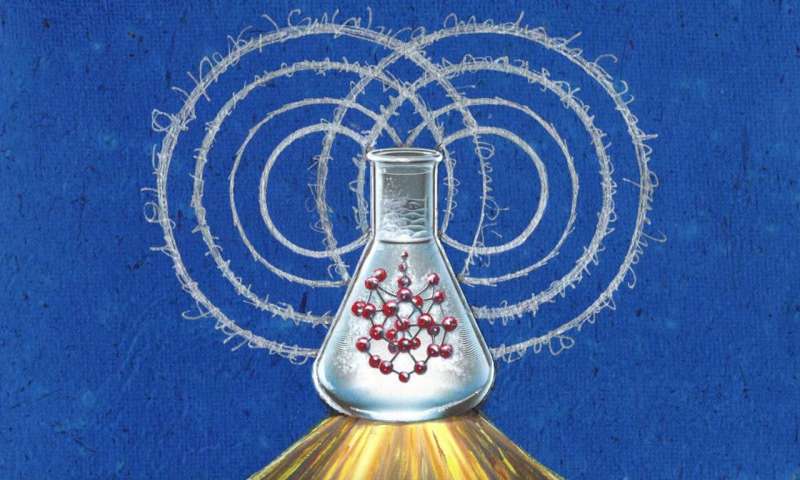This article has been reviewed according to Science X's editorial process and policies. Editors have highlighted the following attributes while ensuring the content's credibility:
fact-checked
peer-reviewed publication
trusted source
proofread
New strategy reveals 'full chemical complexity' of quantum decoherence

In quantum mechanics, particles can exist in multiple states at the same time, defying the logic of everyday experiences. This property, known as quantum superposition, is the basis for emerging quantum technologies that promise to transform computing, communication, and sensing. But quantum superpositions face a significant challenge: quantum decoherence. During this process, the delicate superposition of quantum states breaks down when interacting with its surrounding environment.
To unlock the power of chemistry to build complex molecular architectures for practical quantum applications, scientists need to understand and control quantum decoherence so that they can design molecules with specific quantum coherence properties. Doing so requires knowing how to rationally modify a molecule's chemical structure to modulate or mitigate quantum decoherence.
To that end, scientists need to know the "spectral density," the quantity that summarizes how fast the environment moves and how strongly it interacts with the quantum system.
Until now, quantifying this spectral density in a way that accurately reflects the intricacies of molecules has remained elusive to theory and experimentation. But a team of scientists has developed a method to extract the spectral density for molecules in solvent using simple resonance Raman experiments—a method that captures the full complexity of chemical environments.
Led by Ignacio Franco, an associate professor of chemistry and of physics at the University of Rochester, the team published their findings in the Proceedings of the National Academy of Sciences.
Using the extracted spectral density, it is possible not only to understand how fast the decoherence happens but also to determine which part of the chemical environment is mostly responsible for it. As a result, scientists can now map decoherence pathways to connect molecular structure with quantum decoherence.
"Chemistry builds up from the idea that molecular structure determines the chemical and physical properties of matter. This principle guides the modern design of molecules for medicine, agriculture, and energy applications. Using this strategy, we can finally start to develop chemical design principles for emerging quantum technologies," says Ignacio Gustin, a chemistry graduate student at Rochester and the first author of the study.
The breakthrough came when the team recognized that resonance Raman experiments yielded all the information needed to study decoherence with full chemical complexity. Such experiments are routinely used to investigate photophysics and photochemistry, but their utility for quantum decoherence had not been appreciated.
The key insights emerged from discussions with David McCamant, an associate professor in the chemistry department at Rochester and an expert in Raman spectroscopy, and with Chang Woo Kim, now on the faculty at Chonnam National University in Korea and an expert in quantum decoherence, while he was a postdoctoral researcher at Rochester.
The team used their method to show, for the first time, how electronic superpositions in thymine, one of the building blocks of DNA, unravel in just 30 femtoseconds (one femtosecond is one millionth of one billionth of a second) following its absorption of UV light.
They found that a few vibrations in the molecule dominate the initial steps in the decoherence process, while solvent dominates the later stages. In addition, they discovered that chemical modifications to thymine can significantly alter the decoherence rate, with hydrogen-bond interactions near the thymine ring leading to more rapid decoherence.
Ultimately, the team's research opens the way toward understanding the chemical principles that govern quantum decoherence. "We are excited to use this strategy to finally understand quantum decoherence in molecules with full chemical complexity and use it to develop molecules with robust coherence properties," says Franco.
More information: Ignacio Gustin et al, Mapping electronic decoherence pathways in molecules, Proceedings of the National Academy of Sciences (2023). DOI: 10.1073/pnas.2309987120
Journal information: Proceedings of the National Academy of Sciences
Provided by University of Rochester





















